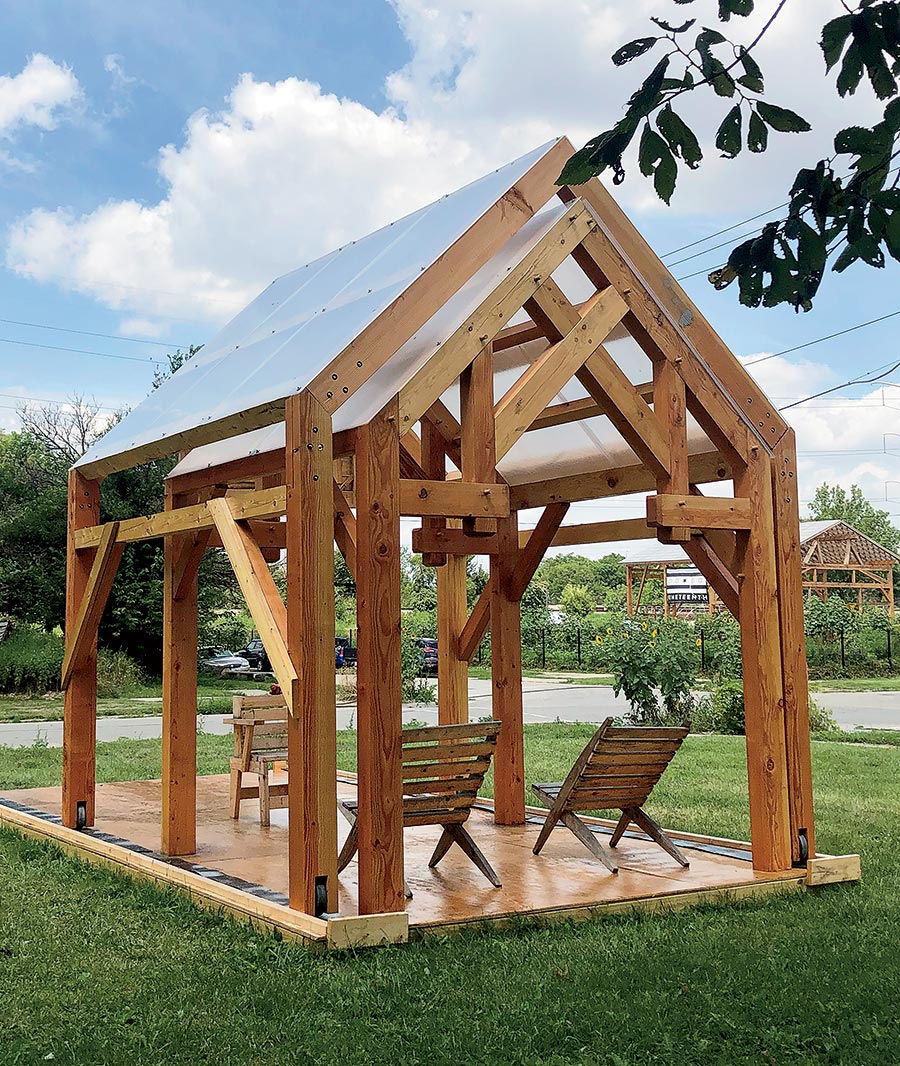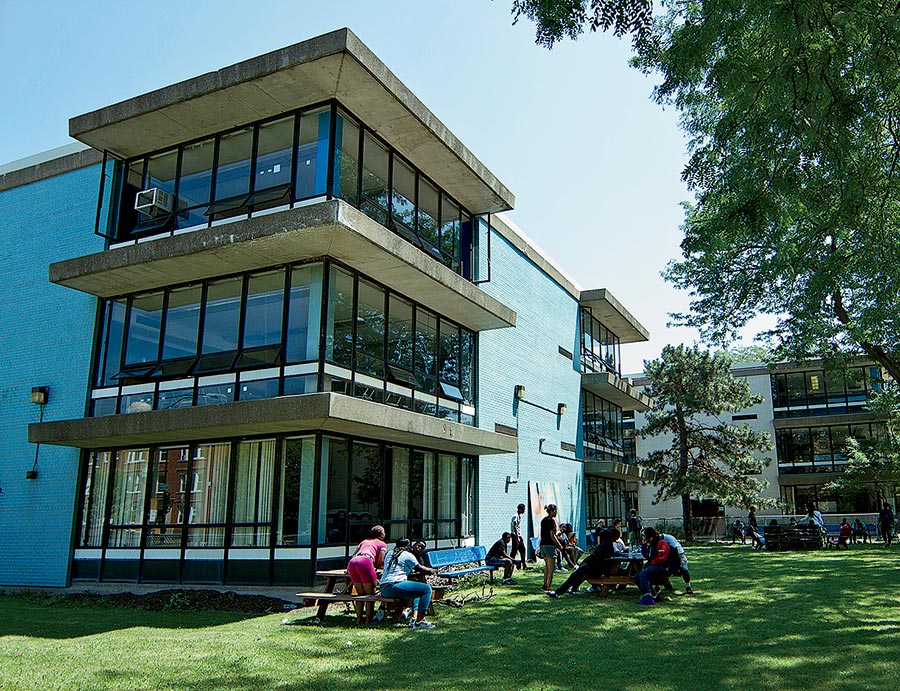Since its inauguration in 2015, the Chicago Architecture Biennial has been a nerve center of cerebral and eye-popping exhibits in the fields of design, urban planning, and visual art. But navigating it can be a daunting prospect. In addition to the main exhibition space at the Chicago Cultural Center, there are numerous offsite shows (with varying dates), “partner sites” (where institutions put on their own programs inspired or cohosted by the biennial), film screenings, educational projects, workshops, and lectures. Plus, architectural event descriptions are notoriously dense and jargon-filled, which means it’s hard to know what’s cool until you get there. With that in mind, we’ve carved through the clutter to find what you don’t want to miss at this year’s biennial, which runs through January 5.

Re-Rooting + Redux
The Sweet Water Foundation is an Englewood-based nonprofit that practices “regenerative neighborhood development,” meaning it transforms blighted spaces into functional and safe landscapes. In July, it worked with the timber construction company Trillium Dell to raise the RND House. Inspired by Chicago’s workers’ cottages, the wood-frame structure serves as a public pavilion on a formerly vacant lot at South Perry Avenue and West 57th Place. For the biennial, it will be temporarily moved downtown into the Cultural Center, where it will host an exhibit on the history of architecture, land use, and housing on the South Side.
The Killing of Harith Augustus
The London-based research group Forensic Architecture employs 3D animation and other technology to reenact human rights violations as a way of investigating them. So it makes sense that it would partner with the Invisible Institute, a local journalism production company, on this video project about last year’s fatal police shooting of a South Shore barber. On view at the Cultural Center, it is “meant to be pragmatic, simple, and direct,” says assistant curator Alex Priest. Using publicly available footage from YouTube, Facebook Live, and police cameras to reconstruct the event, the project is ongoing, with tools to examine the case continuing to be developed during the biennial.

Anthony Overton Elementary School
This Bronzeville school was one of the 50 closed by the city in 2013, and this past spring, the biennial gave four artists and artist collectives residencies in the now-vacant building. Three of them — the local design workshop Borderless Studio, Turkish organization Herkes Icin Mimarlik, and Romanian outfit StudioBASAR — will display their works outside the building throughout the biennial’s run. But make sure to visit from 1 to 4 p.m. on September 21, October 19, or November 14, when you can go inside and experience Berlin-based Zorka Wollny’s Overtone Hive, a sound installation of recordings of children, which serves as both a reproduction of and a requiem for a functioning school.
Listed
For this sonic experiment, the South African media arts group Keleketla! Library will plant recording devices on the last remaining edifice of the Jane Addams Homes (1322 W. Taylor St.), the future site of the National Public Housing Museum. From September 19 to October 13, Keleketla! will capture traffic, conversation, and other sounds outside the building and then turn them into an audio collage that you will be able to hear online.
Cabbage Patch
If you’ve ever been to the Garfield Park Conservatory, you’ve most likely seen the expansive grassy yard behind it. Now imagine that space filled with 10,000 cabbages. Danish artists Gamborg Magnussen will plant the heads alongside a fully functioning outdoor kitchen to raise questions about how nature, farming, and eating can operate in an urban setting. Stop by in January to see if the cabbages made it.


